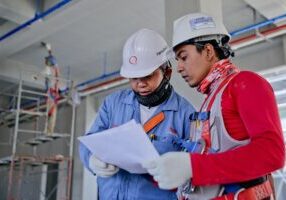When planning a structure task, one of the very most important steps is calculating expenses accurately. Whether you're working with residential, industrial, or commercial houses, knowledge just how to determine expenses assures effective reference allocation and prevents budget overruns. Here's how to produce an exact buildings costs estimator and prevent economic pitfalls.
Knowledge the Aspects of Structure Costs
To calculate structure expenses effortlessly, you'll need to break the project down into its core elements. These typically contain:
Material Expenses: This forms a significant percentage of the overall budget. It includes the cost of organic materials like concrete, bricks, metal, and wood. Be sure to take into account quality variations and local price differences.

Job Fees: Experienced and unskilled job expenses range by region and the project's complexity. You'll also require to incorporate insurance and different labor benefits.
Equipment Expenses: This implies letting or purchasing equipment like cranes, excavators, and tools. Preservation and gasoline costs for the equipment should also be accounted for.
Cost Expenses: These generally include administrative costs, utilities, enables, and licenses. Every task differs, so guarantee you factor in every required overheads highly relevant to your specific situation.
Step-by-Step Manual to Calculating Construction Challenge Costs
1. Determine the Scope of Your Project
Before estimating expenses, clearly outline the project's goals. Including the kind of structure, products expected, timeline, and size. A well-defined scope decreases shocks and underestimation risks.
2. Volume Takeoffs
Perform a detail by detail volume takeoff (QTO). This step requires calculating the actual quantities of materials and job needed, an average of using instruments or software. Having an exact breakdown ensures no facet of the project is overlooked.
3. Research Product and Work Pricing
Get updated estimates for resources from companies to reflect market costs. Likewise, research wage rates for construction personnel in the area. The prices for materials and solutions can fluctuate, therefore utilizing the newest information is needed for accuracy.

4. Put Indirect Expenses and Contingencies
Oblique prices like guidance, gear maintenance, and tools add up quickly. Moreover, incorporate a contingency stream (typically 5-10% of one's foundation cost) to take into account unforeseen costs or inflation.
5. Finalize the Estimate and Review
Following introducing up all charges, review the estimate thoroughly. Seeking insight from professionals or technicians will help recognize neglected objects or incorrect assumptions.
Monitoring real-time costs throughout a project's lifecycle is similarly crucial, since it guarantees estimates align with real costs and keeps costs on track.
